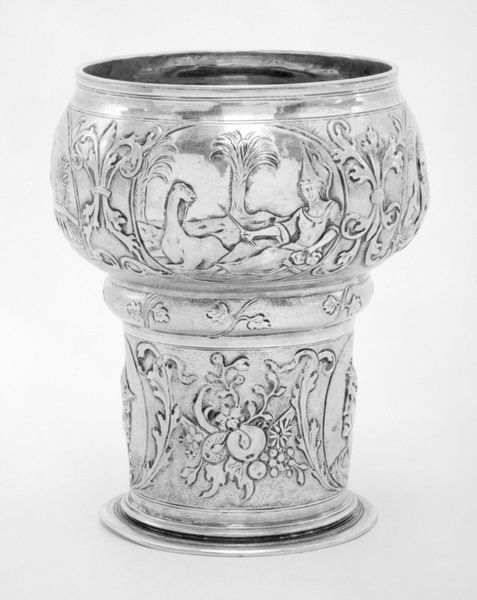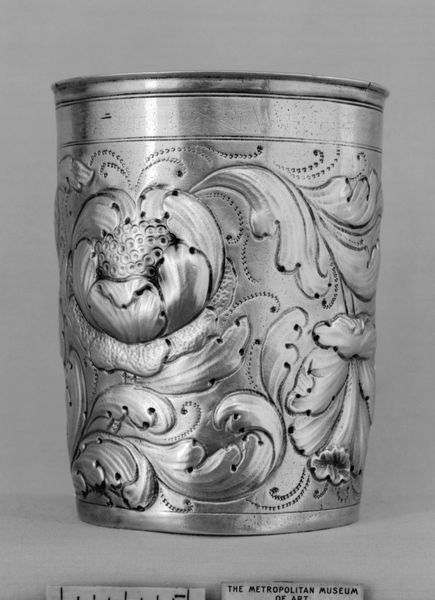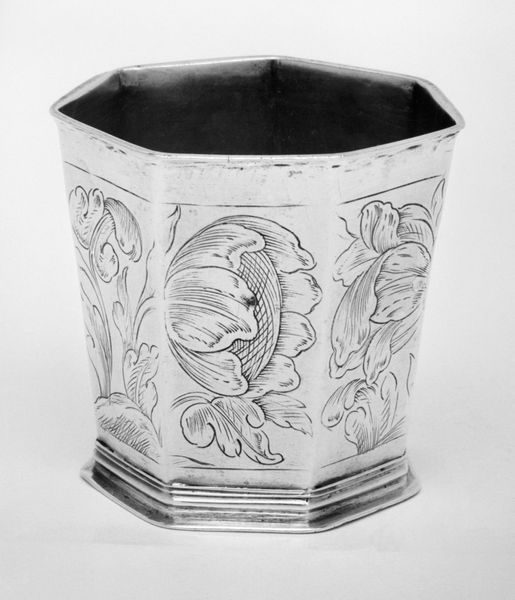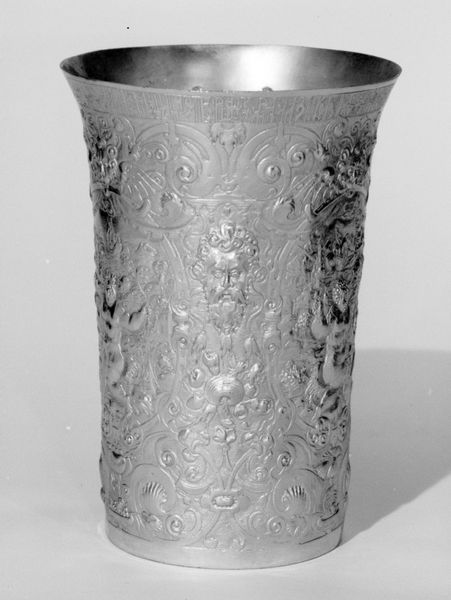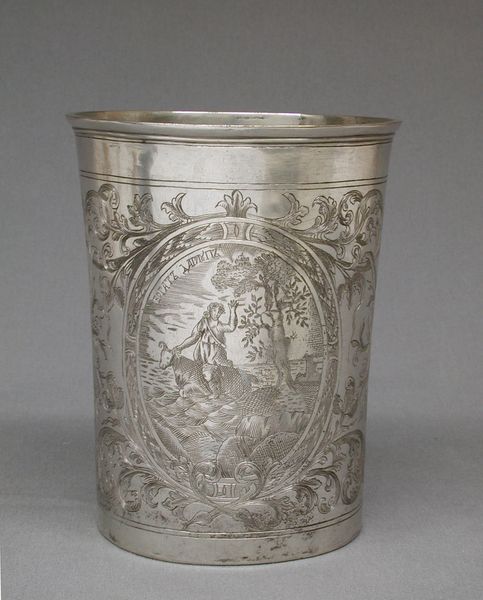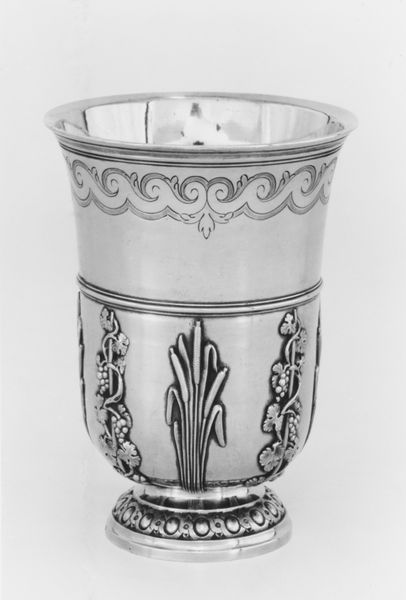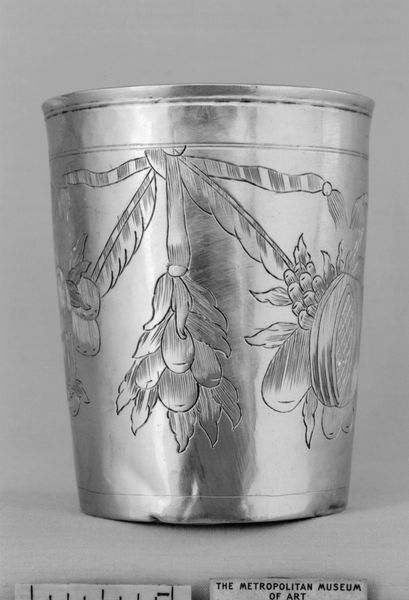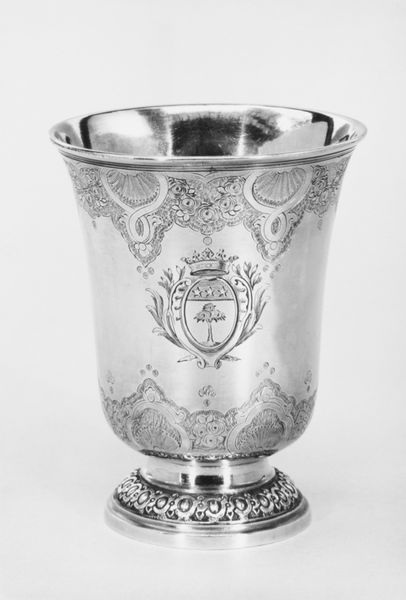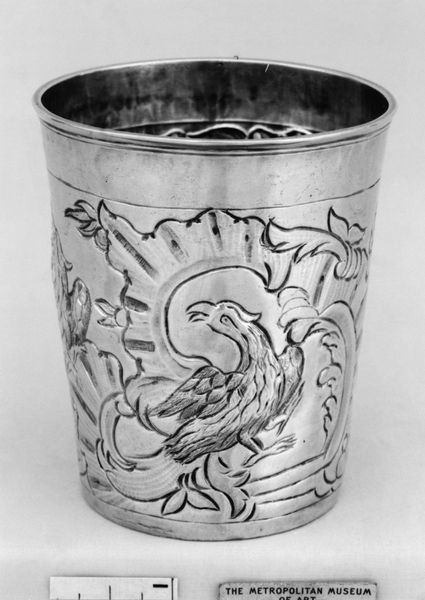
silver, sculpture, engraving
#
silver
#
geometric
#
sculpture
#
decorative-art
#
engraving
Dimensions: Overall: 5 1/8 × 4 in. (13 × 10.2 cm)
Copyright: Public Domain
Editor: Here we have a silver beaker, made by Cornelius Poppe in 1705. The craftsmanship looks really intricate! I'm struck by the central image of what seems to be a woman and a camel. What do you see in this piece? Curator: I see a fascinating intersection of artistic skill and political messaging. This beaker, while ostensibly a functional object, serves as a powerful tool for conveying a worldview. It belongs to a broader tradition of decorative arts being used to represent and often exoticize different parts of the world. Editor: Exoticize? What do you mean by that? Curator: The representation of “Asia” with the woman and camel is more of a European fantasy than a reflection of Asian reality. Think about the cultural and trade dynamics of the 18th century – Europe's increasing global presence shaped how other continents were perceived, often through a lens of power and difference. This imagery would have been consumed by a European elite. Who do you think was its audience and purpose? Editor: Ah, so it’s not just a pretty drinking vessel, but something that reflects power dynamics and cultural understanding at the time. Maybe meant for someone wealthy involved in trade? That reframes how I see the object completely. It’s less about pure artistry and more about the politics of imagery, isn't it? Curator: Precisely. By analyzing its imagery and intended audience, we unlock a richer understanding of the social and cultural context of the time. Editor: I will remember to dig deeper beyond just admiring the aesthetic next time. It really adds another layer to appreciate this beaker. Thanks!
Comments
No comments
Be the first to comment and join the conversation on the ultimate creative platform.

